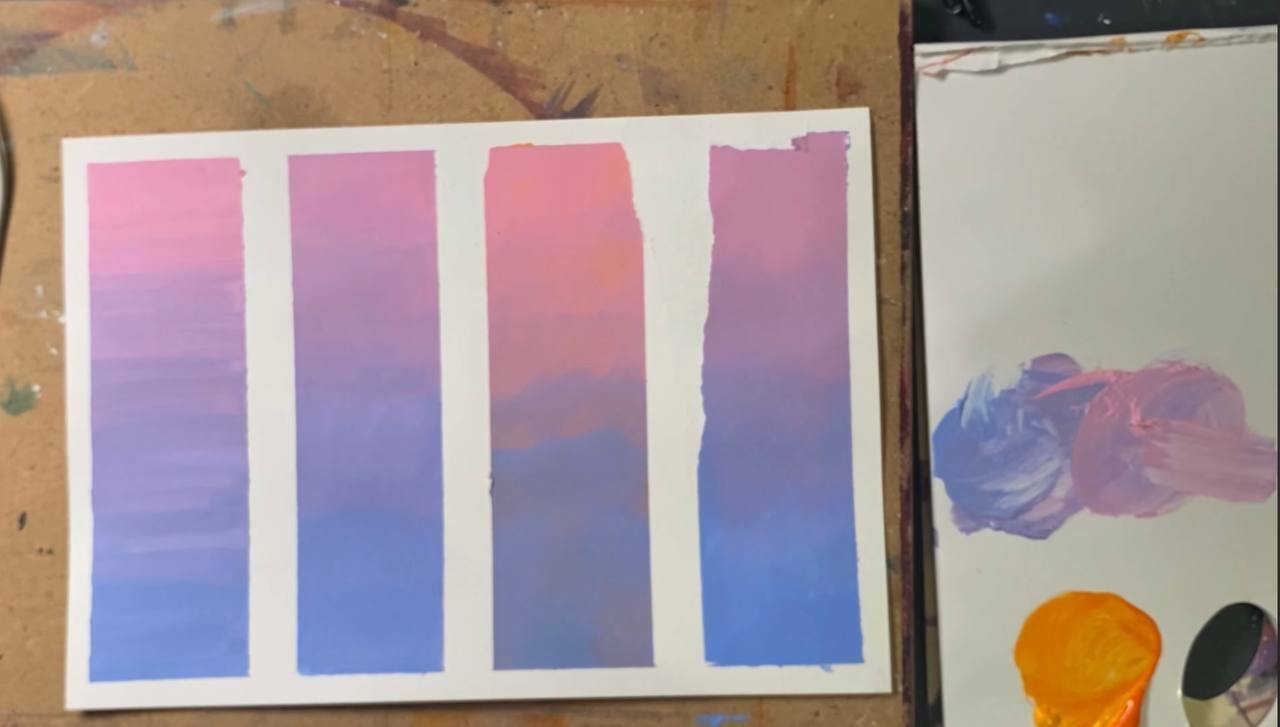Step into the World of Art often begins with understanding paint blending techniques. In this article, we will delve into the captivating realm of gradients using acrylic paints, exploring four key themes, each unveiling its unique facet of art.
- Alla Prima Dry in One Layer:
Perfect for those seeking expressiveness and quick creative solutions.
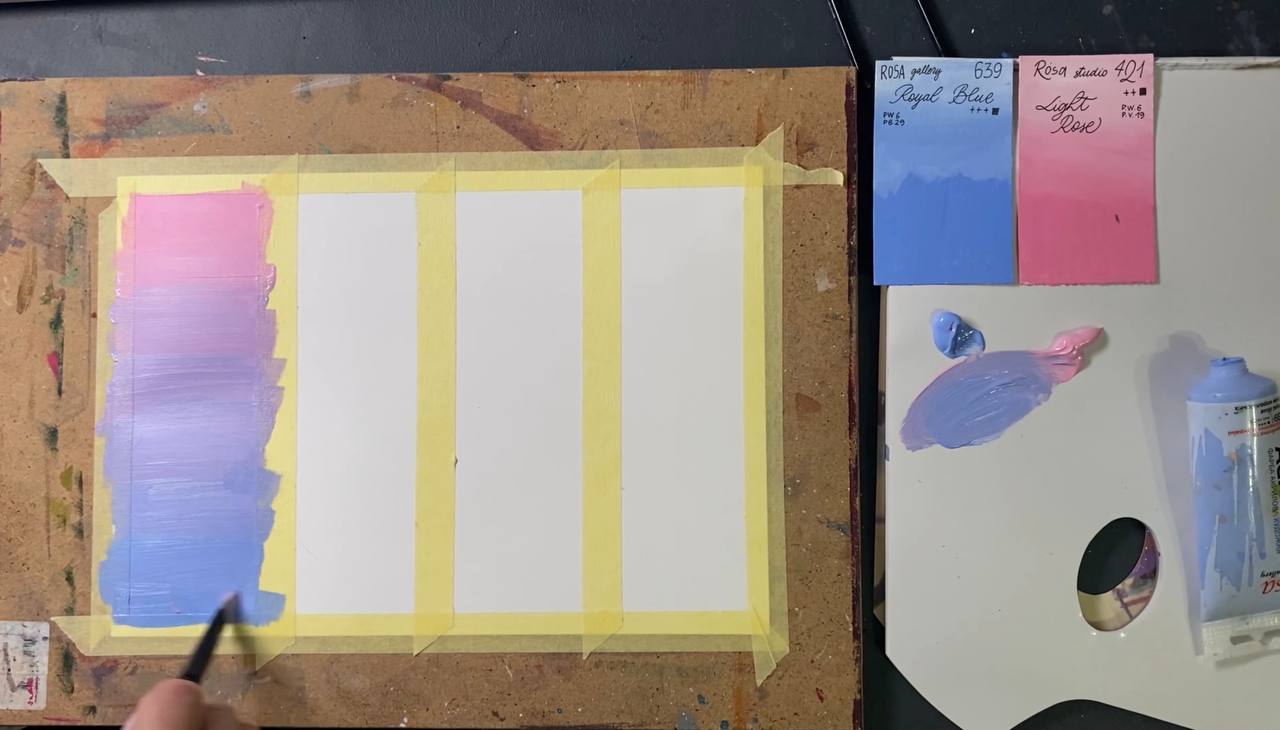
Alla Prima is a technique that allows creating a piece in one session, making it an ideal choice for those pursuing expressiveness and demanding swift creative decisions. The essence lies in completing the canvas in a single session, without waiting for layers to dry, imparting freshness and emotional depth to your work.
2.Wet in Dry in Two Layers:
Learn a technique that adds depth and richness to your artwork.
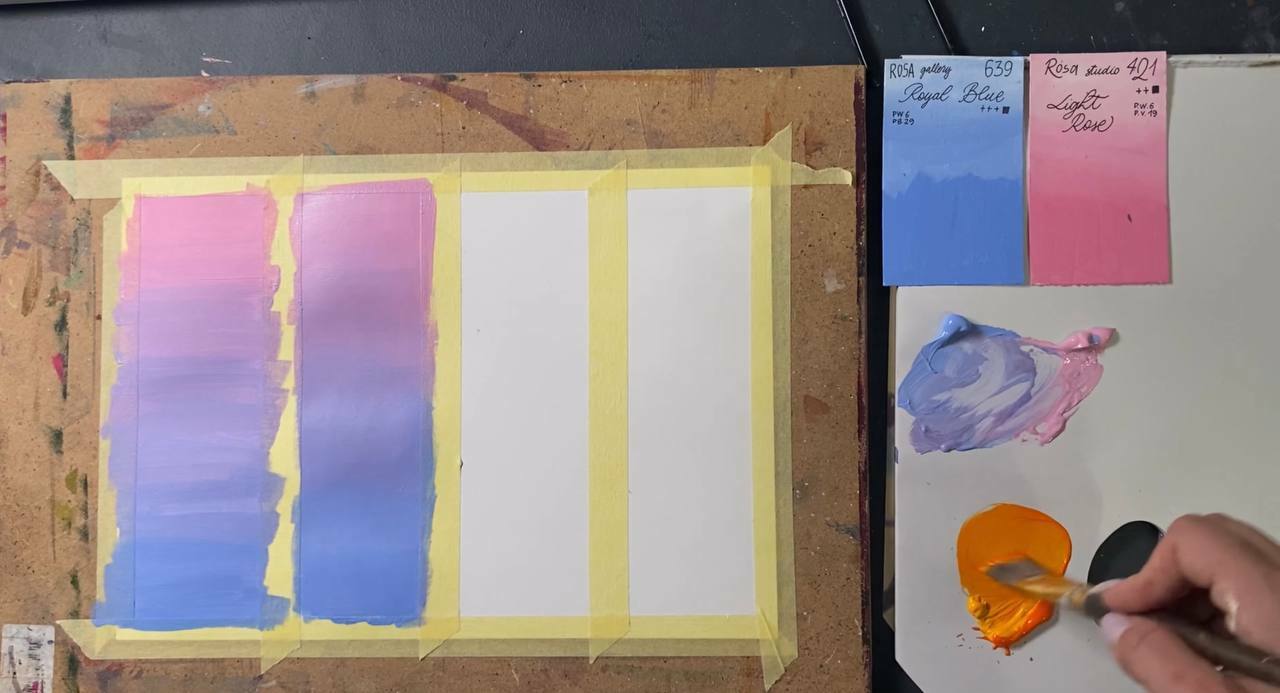
The technique of wet in dry in two layers immerses you in a world of depth and color saturation. Mastering this method enables you to give your works three-dimensionality and the effect of depth. It's an ideal solution for artists aiming to create pieces that are not only beautiful but also multifaceted in their visual impact.
3.Due to Impremature:
Create unique effects with a lower layer of a different color.
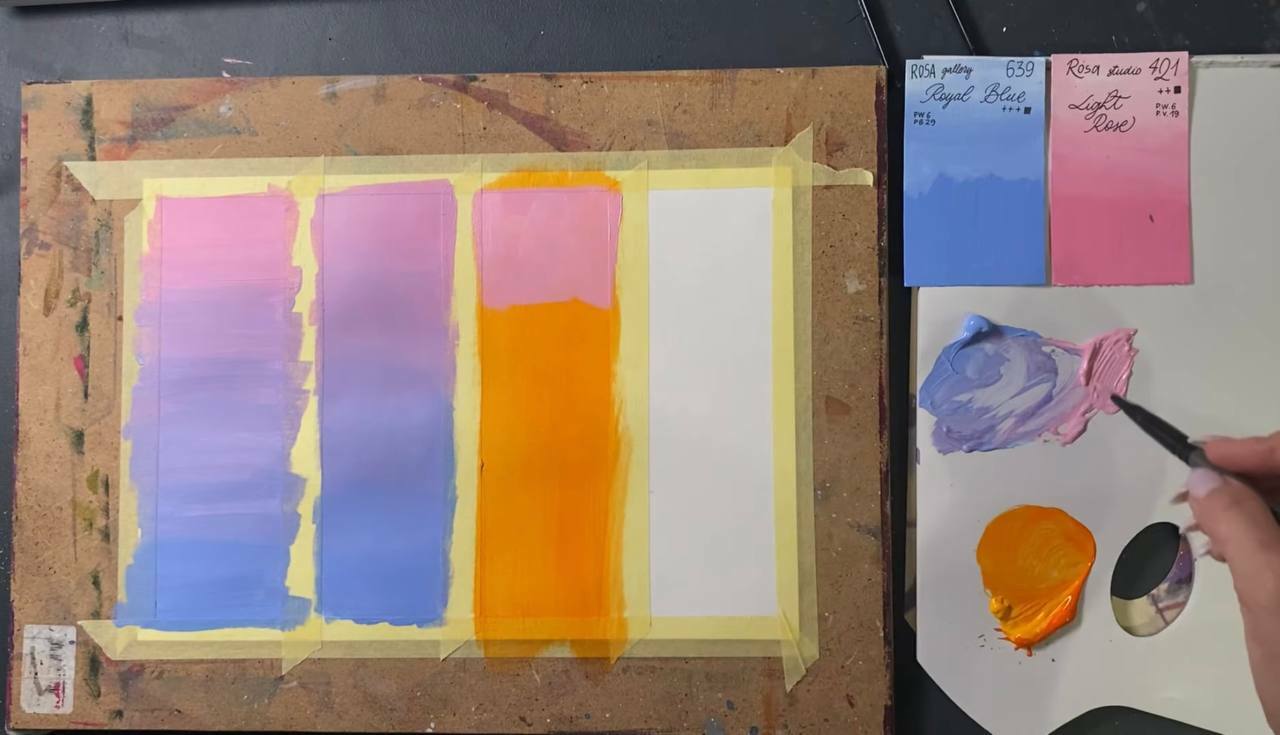
Impremature is a technique that opens doors to crafting unique effects. The essence involves creating a lower layer of a different color, influencing the final appearance of your painting. This allows you to play with contrasts, creating mysterious and intriguing visual solutions.
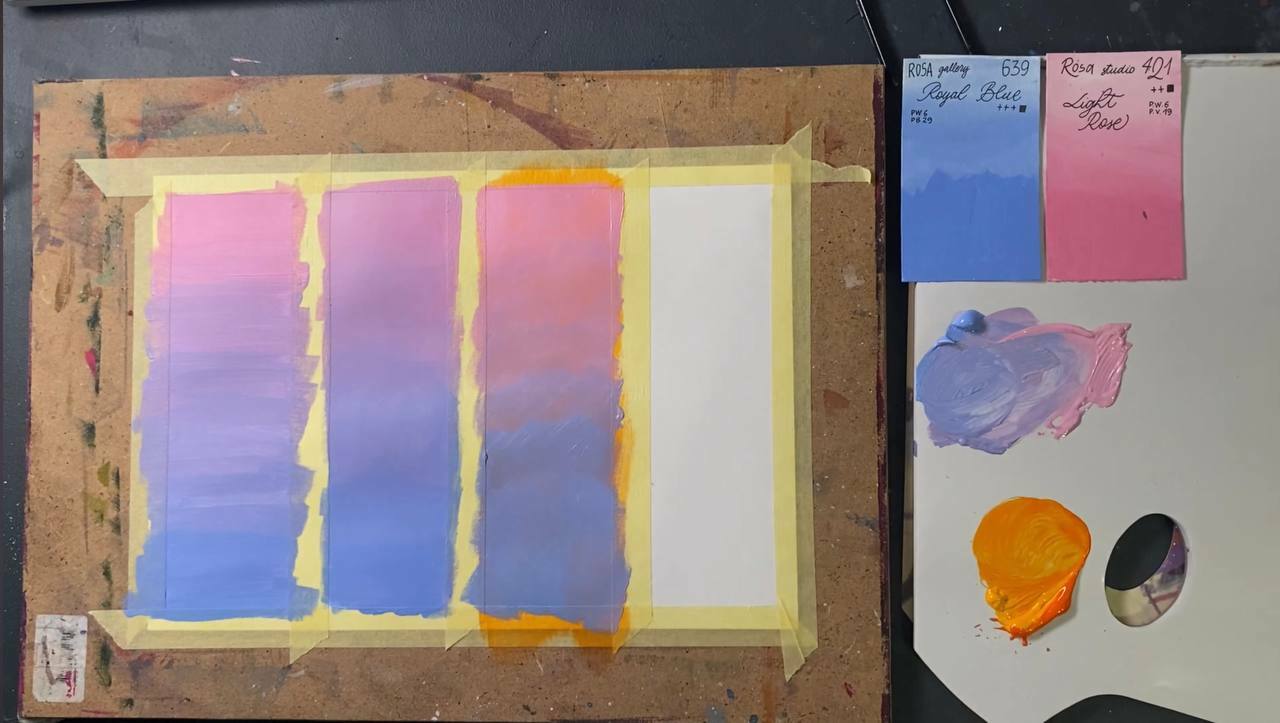
4.Wet in Wet without Using a Palette: Discover how to achieve smooth transitions between colors without a traditional palette.
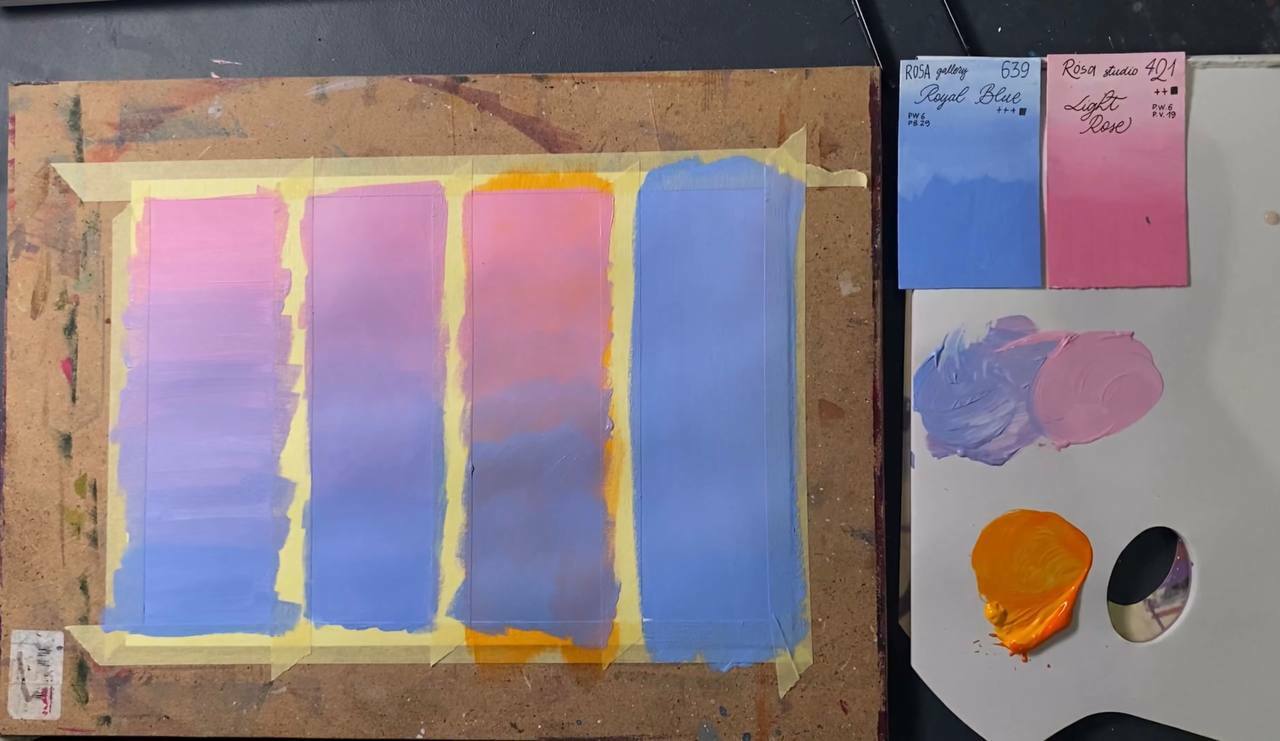
Sometimes, achieving smooth color transitions doesn't require a traditional palette. In this technique, we explore how to create harmonious transitions by working directly on a wet canvas. This opens new horizons for artists, allowing them to experiment with color combinations and create works with unexpected yet harmonious transitions.
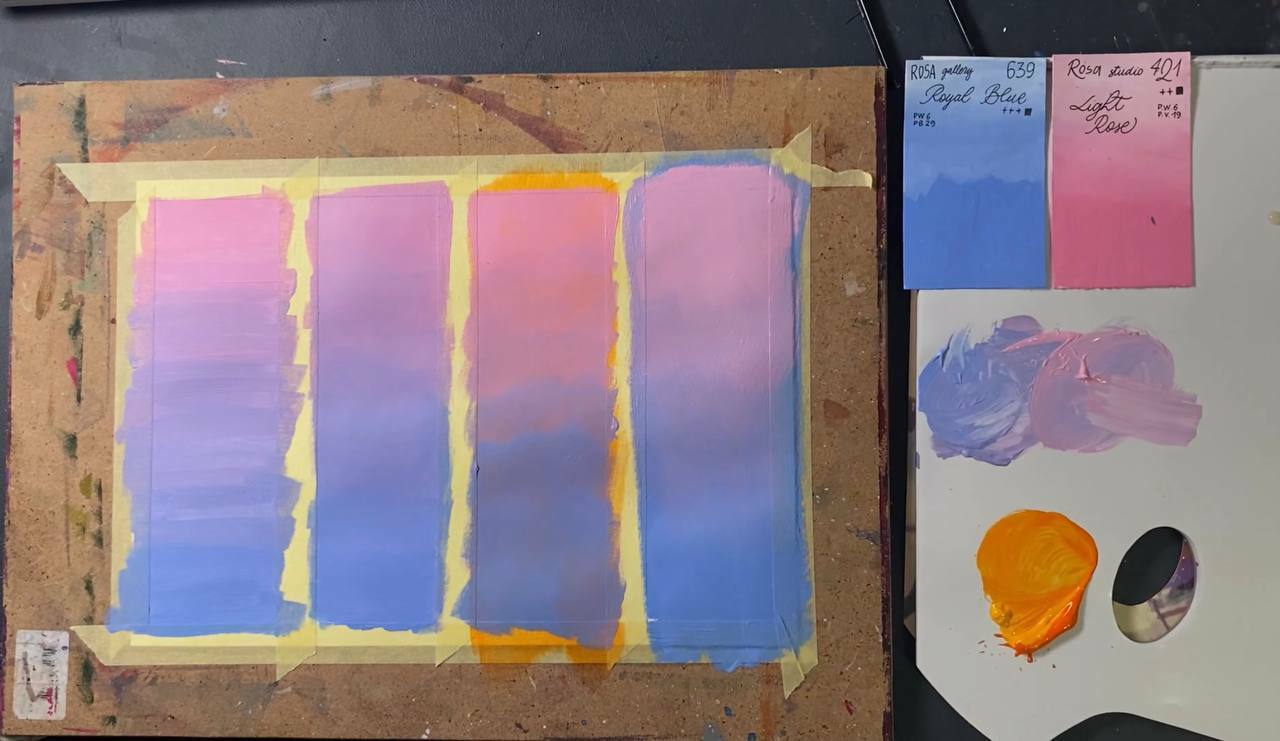
In conclusion, by mastering these four acrylic paint blending techniques, you will expand your artistic arsenal and acquire skills that help express your creative ideas with a unique style. Remember, every artist finds their path in this magical world of art, and these methods merely open doors to limitless creative potential. Good luck on your creative journey!
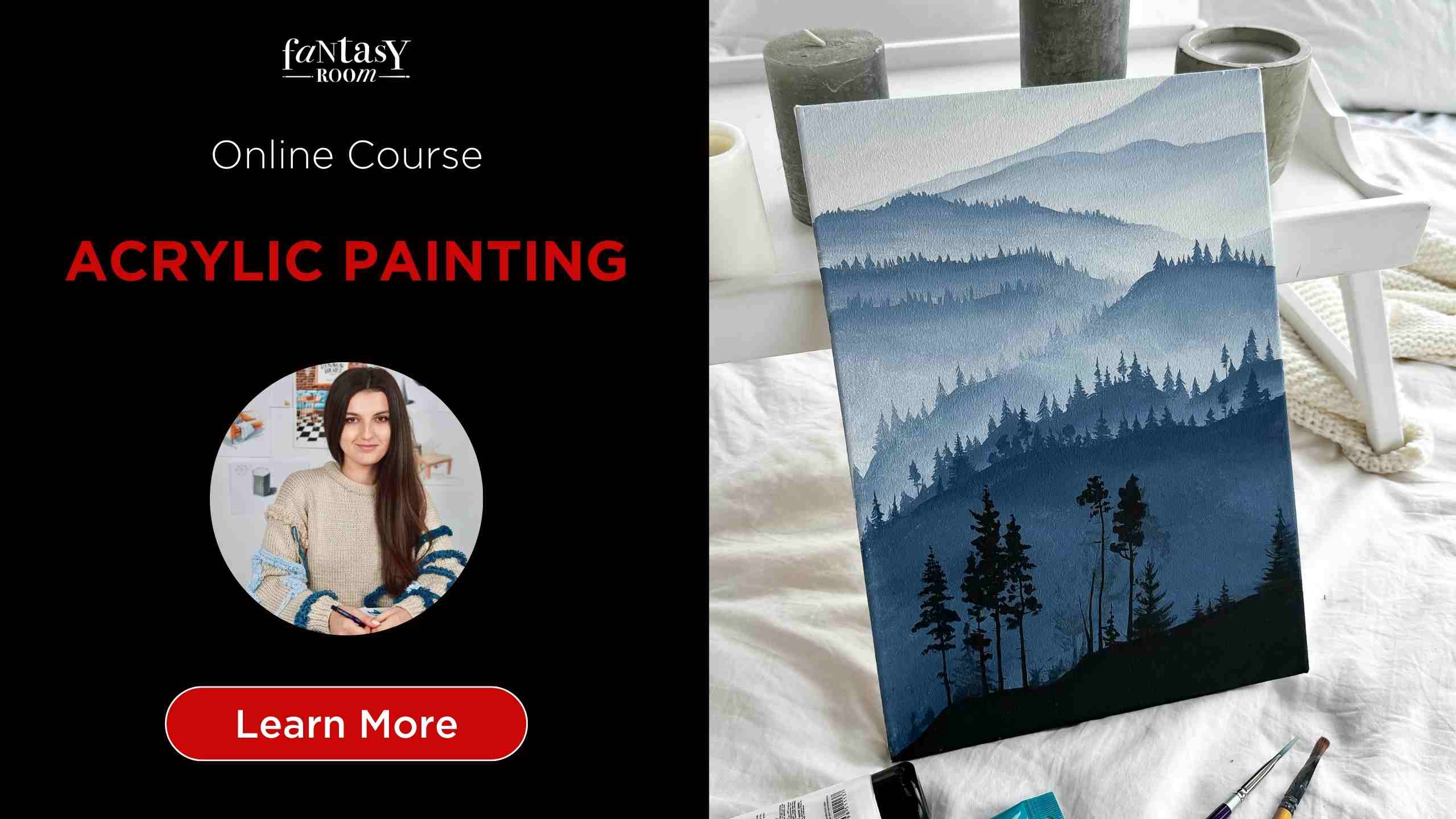
10 Frequently Asked Questions (FAQ) for the Article: "Exploring Techniques of Blending Acrylic Paints"
1. What is Alla Prima, and how does it differ from other painting techniques?
- *Answer:* Alla Prima is a painting technique that completes the artwork in a single session, adding expressiveness. The difference lies in avoiding the waiting time for layers to dry, adding freshness and emotional depth.
2. How does the Wet-on-Dry in Two Layers technique contribute to creating multidimensional art pieces?
- *Answer:* This technique adds depth and saturation, layering wet paint onto a dry surface, offering a three-dimensional and visually impressive result.
3. How should one work with acrylic paints?
- *Answer:* Thoroughly mix the paint before starting. You can apply the paint with a brush (free painting), palette knife, mahlstick, or other tools (stencil work).
4. What is the purpose of an underpainting (Imprimatura)?
- *Answer:* The imprimatura shines through upper paint layers, giving the painting a certain tone and mood, provided the upper layers are applied transparently or semi-transparently.
5. Can these blending techniques be combined in one artwork?
- *Answer:* Yes, artists often combine these techniques, creating complex and visually stunning compositions.
6. Is Alla Prima suitable for detailed paintings, or is it better suited for abstract works?
- *Answer:* Alla Prima is versatile but often preferred for expressive or abstract pieces due to its quick execution.
7. Do these techniques suit artists of all skill levels?
- *Answer:* Yes, these techniques cater to a wide range of skill levels, providing opportunities for both beginners and experienced artists.
8. What benefits do artists gain from mastering gradient techniques with acrylic paints?
- *Answer:* Mastering gradient techniques provides flexibility and the ability to create visually dynamic and captivating artworks.
9. What color should the Imprimatura be?
- *Answer:* The Imprimatura can be of various colors, except for a light background, which, while dynamic, may not unify the paints coloristically.
10. Can the Wet-on-Wet technique without using a palette be challenging for beginners?
- *Answer:* No. Despite some difficulties, it offers a unique approach to achieving harmonious color transitions and is worth experimenting with.
1. What is Alla Prima, and how does it differ from other painting techniques?
- *Answer:* Alla Prima is a painting technique that completes the artwork in a single session, adding expressiveness. The difference lies in avoiding the waiting time for layers to dry, adding freshness and emotional depth.
2. How does the Wet-on-Dry in Two Layers technique contribute to creating multidimensional art pieces?
- *Answer:* This technique adds depth and saturation, layering wet paint onto a dry surface, offering a three-dimensional and visually impressive result.
3. How should one work with acrylic paints?
- *Answer:* Thoroughly mix the paint before starting. You can apply the paint with a brush (free painting), palette knife, mahlstick, or other tools (stencil work).
4. What is the purpose of an underpainting (Imprimatura)?
- *Answer:* The imprimatura shines through upper paint layers, giving the painting a certain tone and mood, provided the upper layers are applied transparently or semi-transparently.
5. Can these blending techniques be combined in one artwork?
- *Answer:* Yes, artists often combine these techniques, creating complex and visually stunning compositions.
6. Is Alla Prima suitable for detailed paintings, or is it better suited for abstract works?
- *Answer:* Alla Prima is versatile but often preferred for expressive or abstract pieces due to its quick execution.
7. Do these techniques suit artists of all skill levels?
- *Answer:* Yes, these techniques cater to a wide range of skill levels, providing opportunities for both beginners and experienced artists.
8. What benefits do artists gain from mastering gradient techniques with acrylic paints?
- *Answer:* Mastering gradient techniques provides flexibility and the ability to create visually dynamic and captivating artworks.
9. What color should the Imprimatura be?
- *Answer:* The Imprimatura can be of various colors, except for a light background, which, while dynamic, may not unify the paints coloristically.
10. Can the Wet-on-Wet technique without using a palette be challenging for beginners?
- *Answer:* No. Despite some difficulties, it offers a unique approach to achieving harmonious color transitions and is worth experimenting with.




